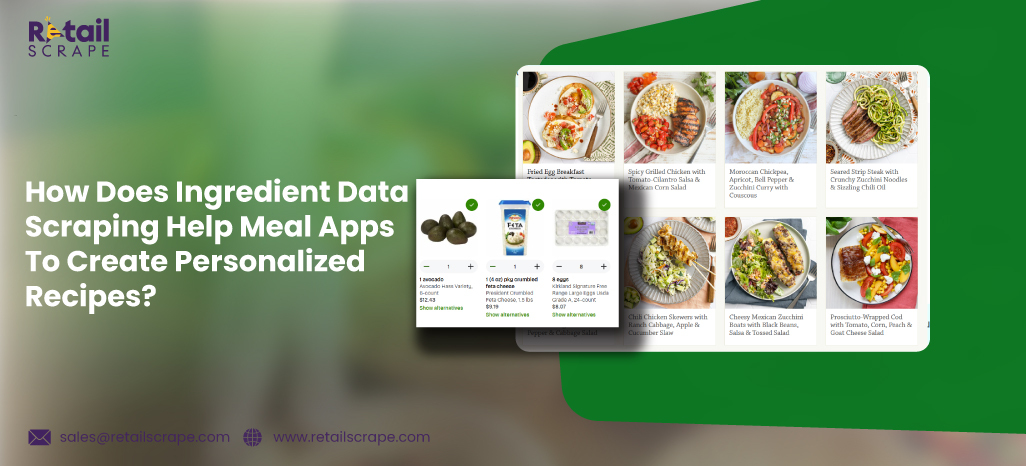
Introduction
In today’s tech-driven world, personalization has become a cornerstone of user experience, especially in food and nutrition apps. Modern meal planning platforms are redefining how we cook by offering recipes that are no longer one-size-fits-all but uniquely crafted for each individual.
At the core of this shift is Ingredient Data Scraping, enabling apps to gather real-time insights about user preferences, pantry items, and dietary restrictions. This approach helps transform traditional cooking into a dynamic, personalized journey where every recipe aligns with health goals, taste preferences, and even what’s available at home.
The Shift Towards Data-Powered Personalization in Meal Planning
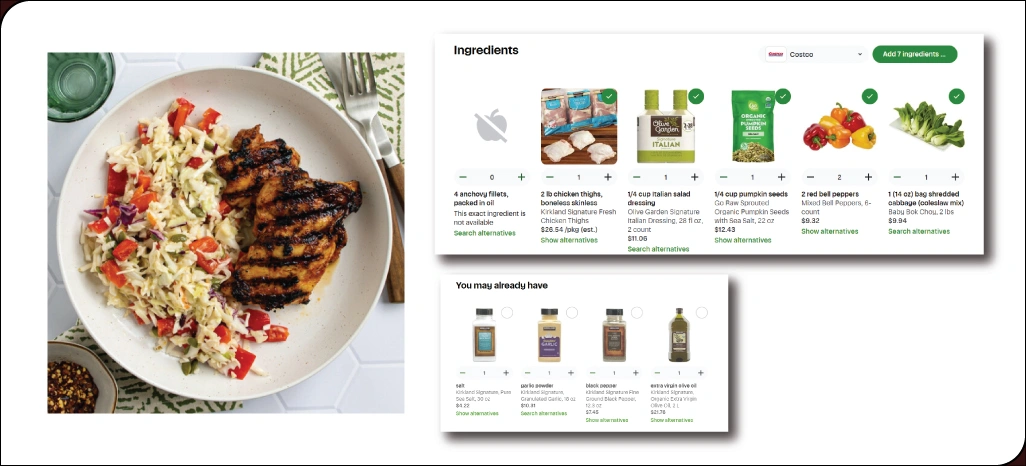
Today’s food apps go far beyond basic filters or calorie tracking—they deliver truly intelligent personalization. This transformation is driven by automated Web Scraping Services For Data Insights, which allow apps to capture and analyze dynamic data across multiple sources.
Modern meal planning platforms now take into account:
- Users' commonly searched or purchased ingredients.
- Local product availability across nearby stores and delivery partners.
- Real-time dietary preferences, health goals, and restrictions.
- Seasonal trends in ingredient pricing and accessibility.
By combining all these insights, apps can recommend recipes that align with individual needs, local availability, and cost efficiency, helping users reduce food waste, meet their dietary goals, and cook smarter every day.
Why Ingredient-Level Intelligence Is Critical for Modern Meal Apps?
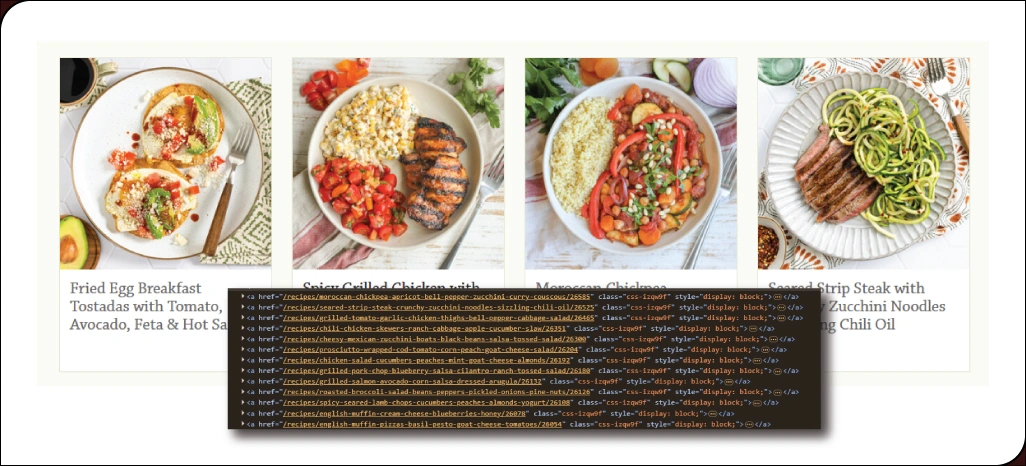
In today’s competitive landscape, surface-level meal or cuisine data no longer cuts it. To offer real value, meal apps must go beyond categories and explore the building blocks of every recipe. This is where Food Ingredients Data Scraping becomes essential.
By accessing detailed ingredient-level insights, apps can:
- Recommend suitable alternatives when certain items are unavailable.
- Detects allergens and diet-specific restrictions with precision.
- Support users’ nutritional goals with macro- and micronutrient breakdowns.
- Adapt recipes based on ingredient pricing or regional accessibility.
Through Ingredient Data Scraping, these platforms can extract real-time data from grocery e-commerce sites, food content platforms, and nutrition APIs. The result? More innovative, highly personalized recipes that are nutritionally balanced, budget-conscious, and better aligned with user preferences.
Turning Ingredient Data into Smarter Recipe Experiences
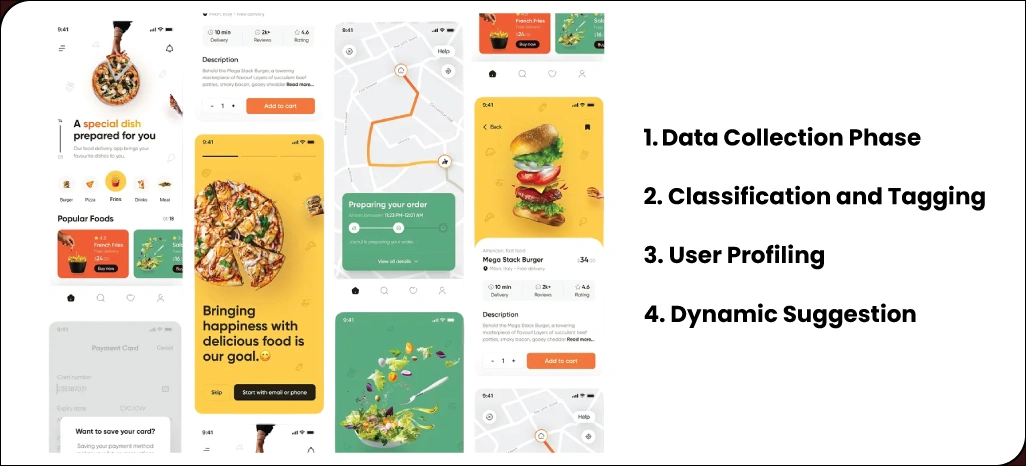
Once ingredient data is gathered, the real innovation begins. Powered by AI, modern recipe recommendation systems convert raw information into actionable culinary insights.
Here's how the process unfolds:
- Data Collection Phase: Platforms utilize a Food Delivery Data Web Crawler For Ingredients to extract data from product listings, nutrition labels, and even delivery availability sources.
- Classification and Tagging: Each ingredient is tagged by its nutritional value, shelf life, cuisine origin, and other key attributes to enable more intelligent filtering.
- User Profiling: Personalized preferences, dietary restrictions, and past choices are matched with ingredient data to enhance relevance and precision.
- Dynamic Suggestion: Real-time, intelligent recipes are created using ingredients that are accessible, budget-friendly, and nutritionally aligned.
The seamless integration of Build Recipe Apps With Scraped Data transforms the cooking journey, empowering users with timely, personalized, and practical meal ideas, eliminating the need for a trip to the store.
How does Dynamic Pricing Influence Meal Choices?
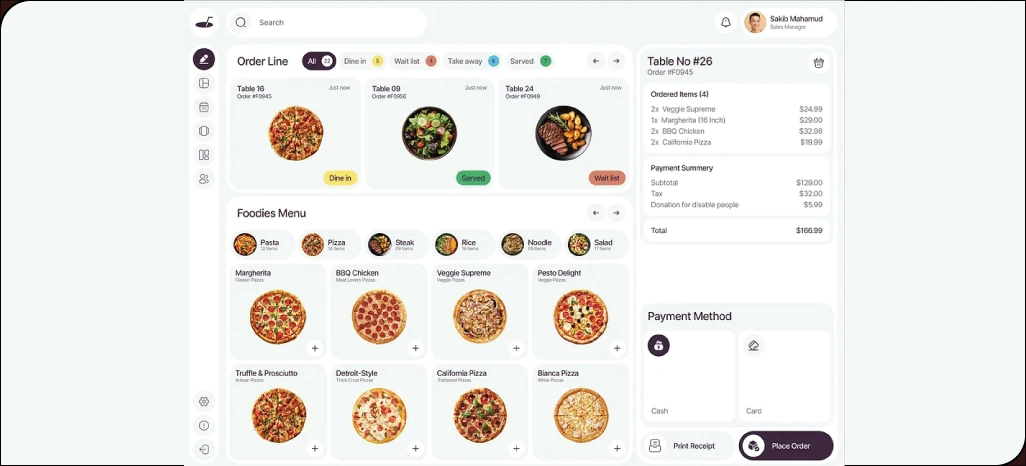
Cost remains a pivotal element in crafting personalized cooking experiences. Today’s users actively seek budget-conscious meals, making Dynamic Food Pricing Trends essential for meal planning apps.
By leveraging Real-Time Food Price Tracking, these platforms can:
- Suggest budget-friendly ingredients that are in season.
- Provide cost-effective alternatives that account for regional price fluctuations.
- Notify users when their preferred grocery items are on sale.
This level of pricing intelligence becomes even more powerful when combined with Online Food Delivery Data Extraction, helping apps factor in delivery charges and up-to-the-minute ingredient availability for truly optimized meal suggestions.
Enhancing Accuracy with Food Delivery Data Insights
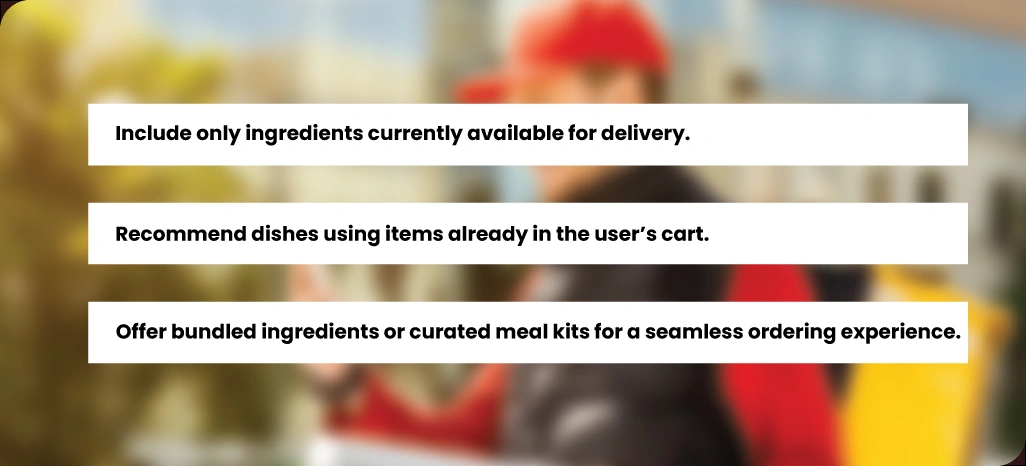
To deliver true personalization at scale, apps need precise, real-time visibility into local food delivery ecosystems. By leveraging Web Scraping Food Delivery Data, platforms can stay aligned with up-to-the-minute changes in delivery schedules, ingredient pricing, and item availability.
This capability empowers apps to:
- Include only ingredients currently available for delivery.
- Recommend dishes using items already in the user’s cart.
- Offer bundled ingredients or curated meal kits for a seamless ordering experience.
These dynamic recommendations are driven by advanced Food Delivery Data Intelligence Solutions, enabling meal apps to respond quickly to market changes and elevate the user experience with data-backed precision.
Scraping Food Ingredients Data: Balancing Ethics and Efficiency
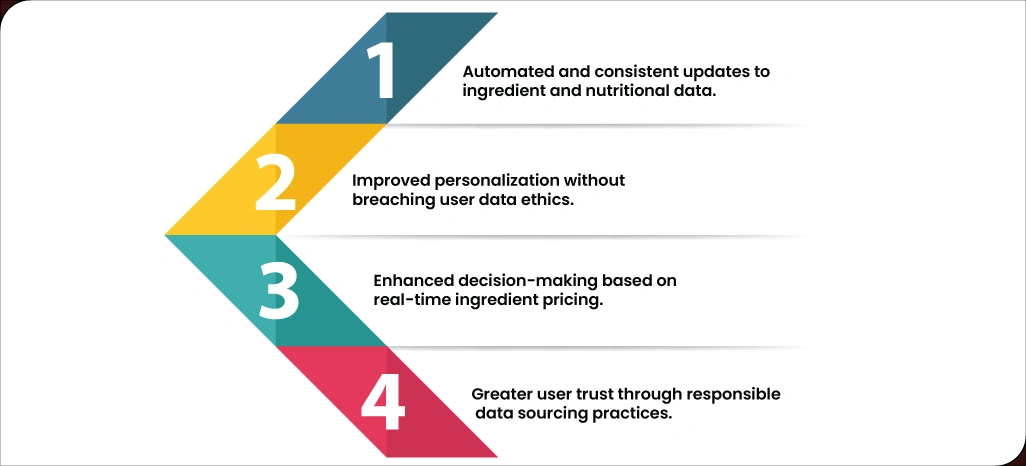
The value of Scraping Food Ingredients Data lies not only in improving personalization but also in maintaining transparency and compliance. For meal apps, it's essential to collaborate with trusted data providers and ensure adherence to legal data usage policies to protect user privacy and uphold brand credibility. With the right Web Scraping Services For Data Insights, ingredient databases can be updated efficiently and ethically, driving more intelligent recommendations without compromising integrity.
Integrating this with a Real-Time Price Monitoring Service further enables apps to provide cost-effective meal suggestions that reflect dynamic market changes.
Key benefits include:
- Automated and consistent updates to ingredient and nutritional data.
- Improved personalization without breaching user data ethics.
- Enhanced decision-making based on real-time ingredient pricing.
- Greater user trust through responsible data sourcing practices.
Future-Proofing Meal Apps with Ingredient Intelligence
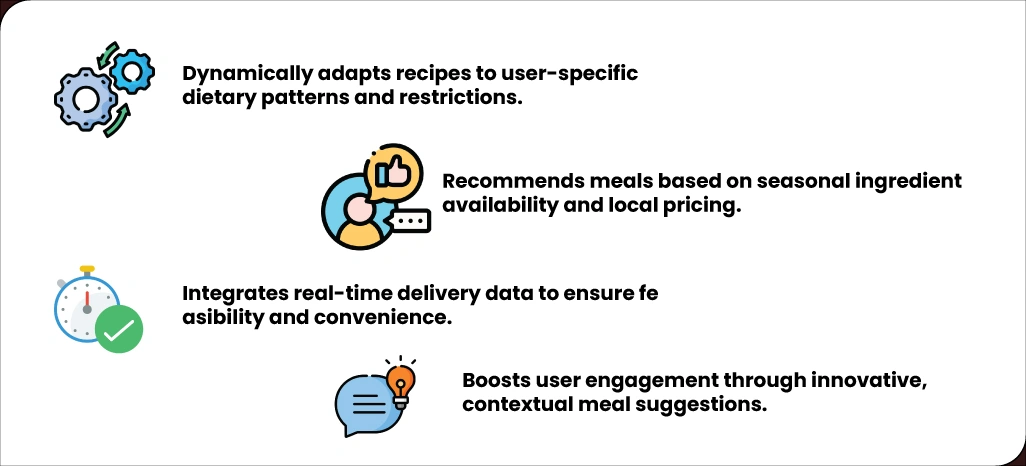
In today’s evolving digital landscape, personalized meal planning has evolved from a novelty to a necessity. Users now expect hyper-customized experiences that align with their lifestyle, health goals, and real-time availability. To stay ahead, meal apps must scale intelligently, offering deeper personalization without sacrificing performance.
By leveraging Data Scraping, apps can transform into dynamic culinary companions that adapt to user preferences, anticipate dietary shifts, and respond to pricing trends. Combined with Food Delivery Data Scraping, platforms can seamlessly integrate recipes, grocery availability, and delivery logistics, building an innovative, all-in-one meal ecosystem.
Here’s how ingredient intelligence empowers future-ready meal platforms:
- Dynamically adapts recipes to user-specific dietary patterns and restrictions.
- Recommends meals based on seasonal ingredient availability and local pricing.
- Integrates real-time delivery data to ensure feasibility and convenience.
- Boosts user engagement through innovative, contextual meal suggestions.
How Retail Scrape Can Help You?
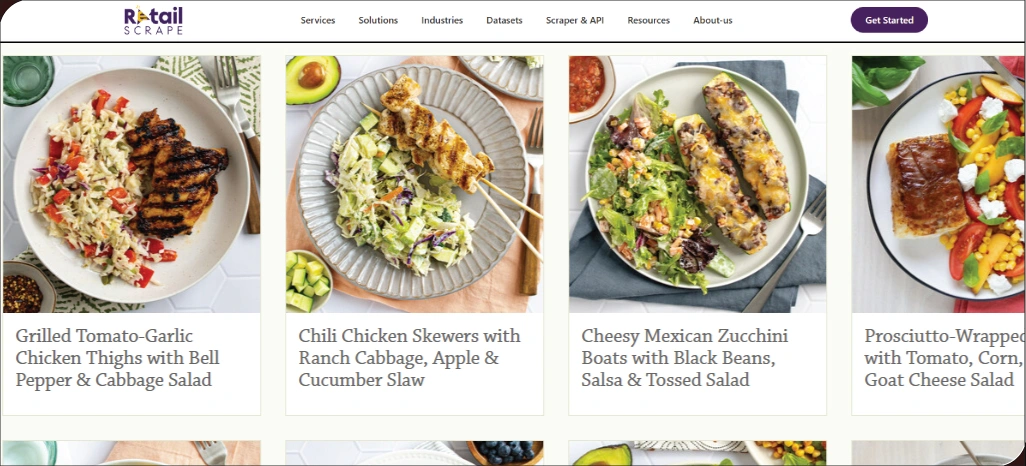
We bridge the gap between raw food data and personalized recipe experiences. By leveraging the power of Ingredient Data Scraping, we help food-tech innovators transform everyday meals into intelligent, user-centric journeys.
Here’s how we bring value to your platform:
- Tailored Ingredient Feeds aligned with user preferences and nutrition goals.
- Live Data Sync with grocery platforms for updated availability and pricing.
- Seamless API Access to integrate data directly into your app workflows.
- Smart Recipe Structuring from scraped cooking methods and ingredient tags.
- Affordable, Scalable Solutions for real-time data extraction across markets.
With us, you don’t just collect food data—you make it meaningful, actionable, and tailored for every user’s plate.
Conclusion
Personalized meal planning is no longer just a trend—it’s the new standard. By integrating Ingredient Data Scraping, meal apps can create recipes tailored to users’ preferences, dietary needs, and ingredient availability. This enables developers to offer more innovative and relevant food experiences while reducing waste and enhancing user satisfaction.
We help you unlock valuable insights by tapping into Dynamic Food Pricing Trends that influence real-time decisions. Whether you’re launching a new platform or optimizing an existing one, our data solutions drive innovation. Contact Retail Scrape today to build smarter, cost-aware recipe apps powered by precision scraping.
